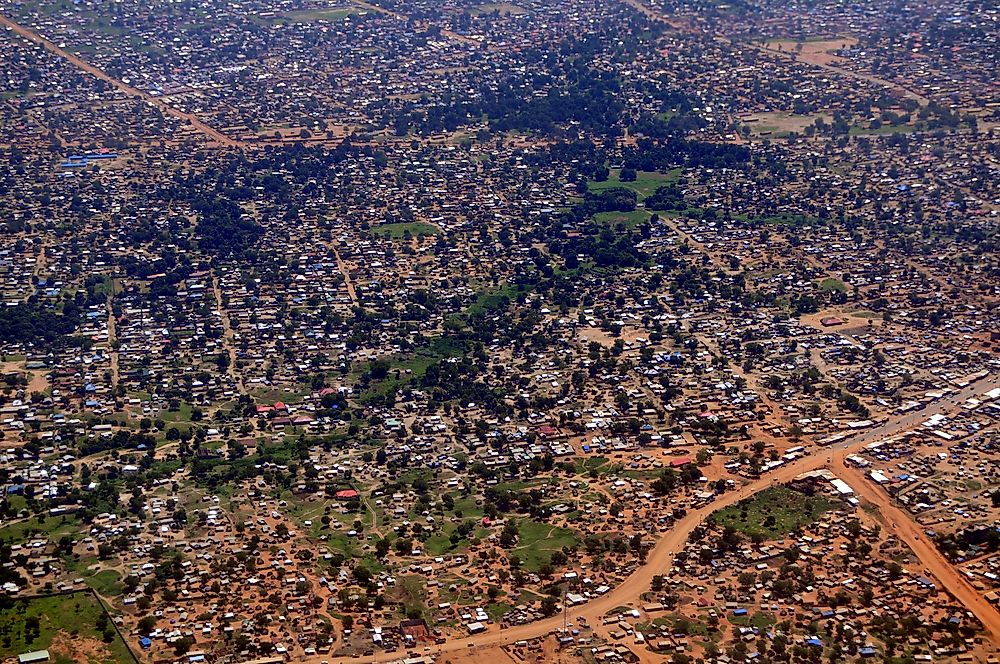Countries With the Most Slums

Slums are found mostly in urban areas in developing countries. These residences range from hovel towns to abandoned apartment houses that have deteriorated over time. Lack of services such as water, electricity, sanitation facilities, and law enforcement all contribute to the pathetic living conditions in slum areas. Statistics published by the United Nations' organization UN Habitat claim that about 863 million people in the developing world in 2012 reside in slum areas in urban locations. Sub-Saharan Africa was on top of the list with about 61.7% of its total population living in its slum areas. However, Mexico City wins hands down with having the biggest slum city in the world.
Countries with the Largest Relative Slum Population
Topping the list among countries having the highest percentage of its urban population living in city slums is South Sudan at 96%. Second on the list is Central African Republic at 93%. Third is Sudan at about 92%. Fourth on the list is Chad at 88%. Fifth on the list is Sao Tome and Principe at about 87%. Sixth on the list is Guinea-Bissau at 82%. Seventh on the list is Mozambique at 80%. Eighth on the list is Mauritania at 80%. Ninth on the list is Madagascar at 77%. Tenth on the list is Sierra Leone at about 76%. Eleventh on the list is the Democratic Republic of Congo at 75%. Twelfth on the list is Haiti at 74% while Ethiopia at 74% is thirteenth on the list of countries with the most of its city population living in its slums. Fourteenth on the list is Somalia at 74% and trailing in fifteenth place on the list is Niger with about 70% of its city population living in its city slums.
How Slums Arise
Most slum areas around the world developed over time as a result of urban migration, high unemployment, poverty, and economic stagnation. In African countries, slums are a product of civil war, internal emigration, segregation, non-existent economy, unemployment, and failed states. African slums are the outcome of rural people escaping far worse conditions in the countrysides.
Life In Slums
People living in slums all over the world suffer the most in terms of lack of basic services, dreadful living conditions, high rate of infectious diseases, and crime. Slums are also a breeding ground for all sorts of negative influences towards young people. Although the majority of slums are associated with poor countries and non-existent economies, the slums of many Sub-Saharan African metropolises have grown as fast as their economies.
Countermeasures
The United Nations has stated one of its goals is “cities without slums.” According to the UN, to achieve this goal governments must have good city management, active urban planning, infrastructure development and public housing, poverty reduction, and slum upgrading. Although slum removal and slum relocation have been used in the past to eliminate slums around the world, it has proven ineffective in solving the problem. Majority of the residents of the slum areas that were removed or relocated suffered the added burden of being far from their place of work and social support systems.
15 Countries Where City-Dwellers Are Most Likely To Live In Slums
| Rank | Country | % of Urban Population Living In Slums |
|---|---|---|
| 1 | South Sudan | 96% |
| 2 | Central African Republic | 93% |
| 3 | Sudan | 92% |
| 4 | Chad | 88% |
| 5 | Sao Tome and Principe | 87% |
| 6 | Guinea-Bissau | 82% |
| 7 | Mozambique | 80% |
| 8 | Mauritania | 80% |
| 9 | Madagascar | 77% |
| 10 | Sierra Leone | 76% |
| 11 | DR Congo | 75% |
| 12 | Haiti | 74% |
| 13 | Ethiopia | 74% |
| 14 | Somalia | 74% |
| 15 | Niger | 70% |











